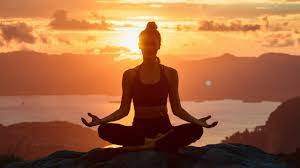Yoga is known for its calming movements, breath control, and ability to bring both the mind and body into a better state of balance. For people living with disability, yoga can also support mobility, coordination, stress relief, and social connection. That’s why many Australians are now asking: Will the NDIS pay for yoga?
The answer? Yes—if it’s connected to your plan goals and delivered in a way that meets NDIS guidelines. Yoga is increasingly offered as part of group-based programs designed to support wellbeing, participation, and inclusion. In particular, structured ndis social groups often include yoga sessions as part of their regular schedule.
Why Yoga Is Valuable for People With Disability
Yoga is more than a fitness trend—it’s a flexible practice that can be adapted for all body types and abilities. For NDIS participants, it can play a key role in:
- Improving balance and motor skills
- Reducing anxiety and sensory overload
- Building routine and confidence
- Supporting emotional regulation
- Encouraging social interaction in a gentle setting
Whether seated, standing, or assisted, yoga movements can be tailored to meet participants where they are. And because yoga emphasises self-awareness over competition, it creates a non-judgemental space where people feel welcome.
According to Better Health Channel, yoga improves flexibility, muscle strength, mental focus and resilience—benefits that align closely with common NDIS goals.
When Does NDIS Cover Yoga?
The NDIS may fund yoga if it contributes to your individual goals and is delivered as a support that fits within your plan’s budget. Yoga may be included under:
- Core Supports – Assistance with Social and Community Participation
- Capacity Building – Increased Social and Community Participation
- Capacity Building – Improved Health and Wellbeing (in some cases, with appropriate documentation)
To qualify, the yoga activity usually needs to:
- Be part of a structured program
- Have a clear link to your personal development or wellbeing goals
- Be run by someone experienced in supporting people with disability
That’s where ndis social groups often lead the way, offering accessible yoga as part of a holistic group program.
What Kinds of Yoga Sessions Are Offered?
Not all yoga is created equal—and that’s a good thing. Inclusive programs tailor their approach based on the needs of participants. Popular formats include:
- Chair yoga – For people with limited mobility or balance issues
- Gentle flow – Low-impact stretching and breathing sessions
- Sensory-friendly yoga – Calm, quiet environments with clear instructions
- Group-based yoga – Designed to encourage social engagement and group participation
- Mindfulness and movement – Combining yoga with relaxation or breathing techniques
Some programs may even pair yoga with music, art, or group discussion as part of a broader therapeutic experience.
To see what’s available in your area, explore local ndis social groups offering movement-based wellbeing activities.
Real-Life Story: Finding Calm and Confidence
Casey, a 35-year-old participant with psychosocial disability, used to experience heightened anxiety in group settings. With the support of her NDIS plan, she joined a small yoga and wellness group offered by her local community centre. Over time, her breathing improved, she became more open to social interaction, and she began leading stretches for others.
What started as an exercise session became a source of routine, calm, and self-confidence.
These stories aren’t uncommon. Participants often find that yoga provides them with both physical and emotional tools they can use well beyond the class itself.
What Can the NDIS Fund?
When yoga is part of a structured support arrangement, the NDIS may cover:
- Class attendance or program fees
- Support worker assistance during the class
- Group-based sessions delivered by disability-aware providers
- Transport to and from the venue (if covered in the plan)
What’s not covered:
- Gym or fitness memberships without a support purpose
- Casual drop-in classes that aren’t linked to a support plan
- One-on-one private yoga tuition unless justified through therapeutic goals
As always, speak with your support coordinator or plan manager to confirm eligibility and align any yoga sessions with your individual plan.
How to Get Started With NDIS-Funded Yoga
Here’s a quick guide to adding yoga to your plan:
- Clarify your goals – Identify outcomes like “manage anxiety,” “improve flexibility,” or “join group activities.”
- Review your funding – Check if you have relevant Core or Capacity Building supports.
- Find the right group – Choose inclusive yoga programs that welcome NDIS participants.
- Book a trial – See how the class feels before making an ongoing commitment.
- Provide feedback – Track how you feel after each session and share progress with your team.
If you’re looking for inclusive options in your community, structured ndis social groups are a great place to begin.
Final Word
So, will NDIS pay for yoga? It can—and it should, when the activity supports your health, confidence, and connection to others.
Yoga is one of the most accessible and adaptable forms of movement. Whether you’re aiming to improve mobility, calm your mind, or simply enjoy a weekly routine with others, yoga offers a safe and empowering space to grow.
With the right support and provider, your NDIS plan can help make it possible. Because sometimes, the biggest steps toward wellbeing start with a deep breath and a stretch.

